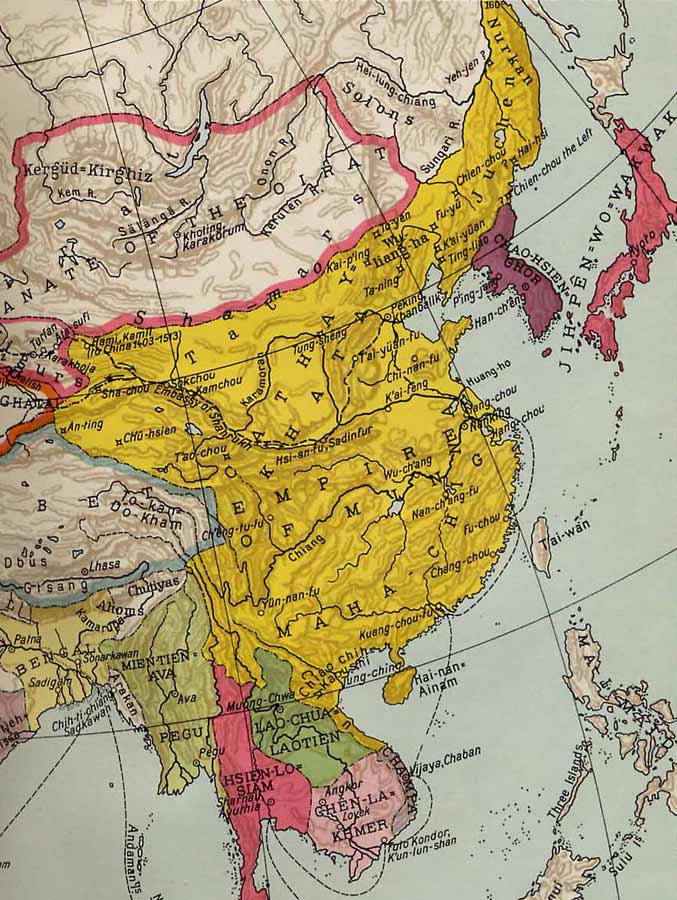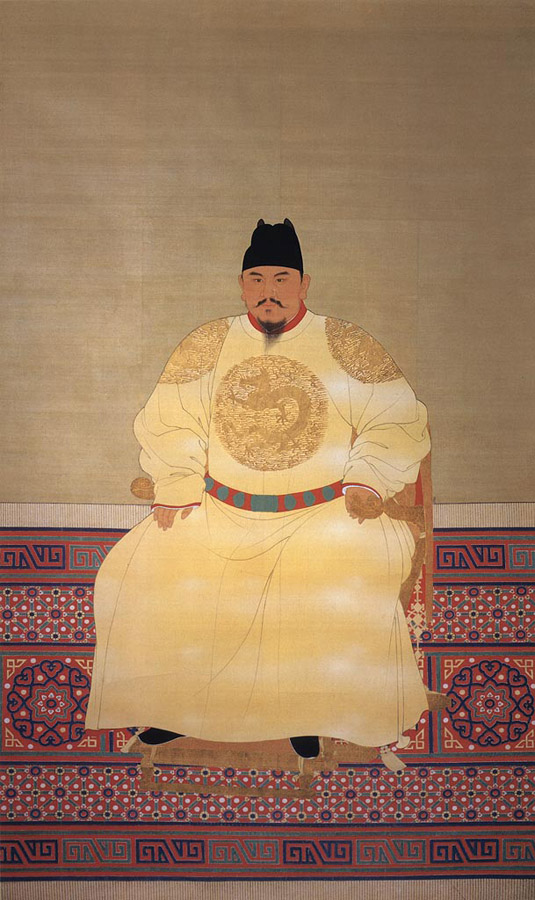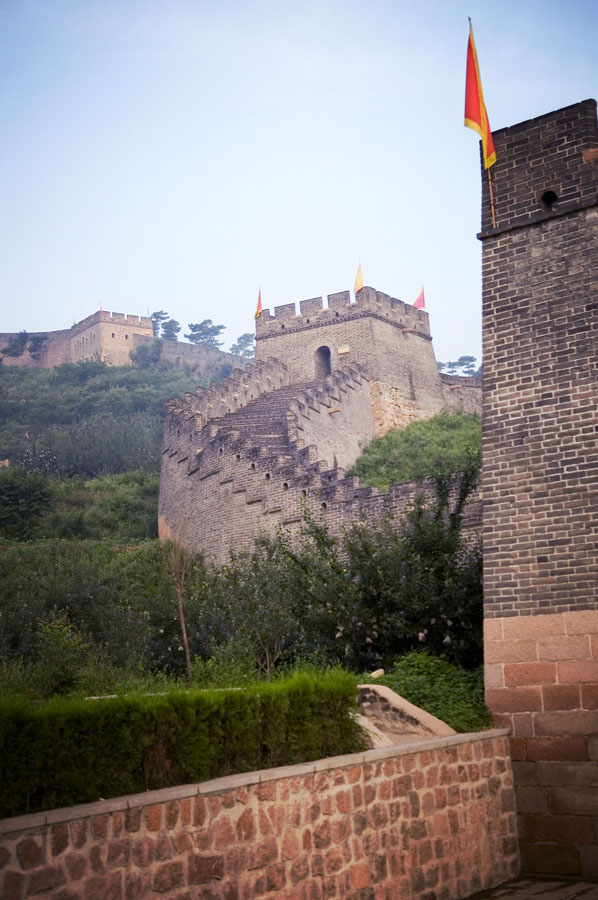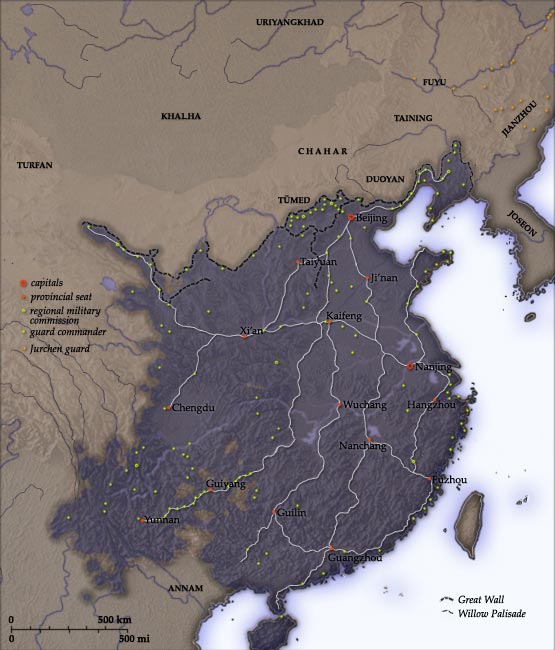One of these remains or landmarks is the Ming Dynasty Tomb, which was made during the Ming Dynasty from A.D. 1368 to 1644. The Ming Dynasty Tomb is a memorial site where approximately 13 emperors and 23 empresses were buried. This sacred site is actually a unique landmark among so many others in China, because of its layout. The tomb’s layout is heavily influenced by and based on Feng-Shui. It is also believed that the evil spirits are warded off inside the tombs.
The Ming Dynasty Tomb is only one of the many cenotaphs left from the period of the “Empire of the Great Ming” or simply, the Ming Dynasty. The Ming Dynasty is a period of ruling in China that followed the defeat of the Yuan Dynasty, which during that time China was ruled by the Mongols. It was during the Ming Dynasty that a navy and an army were first constructed of one million troops, a size that surpassed all others in the 15th century. It was also during this period when the reconstruction of the Grand Canal and the Great Wall of China occurred and the construction of the Forbidden City, which then housed the emperors of imperial China in Beijing from the 15th century to 1911, materialized. The Ming Dynasty was remembered as the last dynasty reigned by Han Chinese and had contained and sustained an estimated 160 to 200 million people in population during the latter years of its rule.
The Beginning and the Rise
Due to the years of suffering from economic crises, famines, natural disasters and political problems, the Yuan Dynasty met its plummet when uprisings of the disgruntled populace came up against the government. These uprisings were acted mostly by the Red Turban, which was headed by peasant leader Zhu Yuanshang. After series of rebellions, the Yuan Dynasty was finally overthrown and the Ming Dynasty was declared with Zhu Yuanshang as the first emperor in 1368. Zhu Yuanshang changed his name to Emperor Hongwu and moved the capital of China from Nanjing to Beijing. It was then that the center of Beijing, the Forbidden City, was established.
The Ming Dynasty was marked by the wide range of public works and accomplishments. Apart from the repair of the Great Wall of China and the establishment of the Forbidden City, separation of cities and rural areas were also pushed to create an increase in production for Chinese farms to be used for storage and trade. By the turn of the 16th century, China’s economy was fueled by trade with various countries and nationalities, some of which are the Spanish, Dutch and Portuguese. Chinese merchants became involved in global trading of plants, animals and food. Meanwhile, great quantities of silver came into the country through commerce with the Europeans and the Japanese. This occurrence paved the way for the change of currency in China, from copper and paper to silver notes.
Aside from its growing economy, China’s arts, culture and sciences also experienced burgeoning growth during the Ming rule. Artists produced great paintings and there was an abundance of fine porcelain, exquisite lacquer, and other art crafts. The production of dictionaries and books in philosophy and the sciences marked an era of greater intellectualism among the Chinese. Aside from these, novels like “Water Margin” and “Journey to the West”, both of which were written in vernacular Chinese, were deemed as few of the most important classical pieces in Chinese literature.
Another remarkable accomplishment during the Ming Dynasty was the reform of the military forces that resulted to its fast and essential expansion. The Chinese military, which were considered low members of the society before the Ming Dynasty, have risen not only in social status as individuals but have also become more solid and more fortified as a front.
The Decline and the Fall
Despite the flourishing cultural and military state of Ming China, however, the economy slowly declined when China’s administration became more centralized at the time Emperor Wanli entered political governance during the Ming Dynasty in 1572.
Silver, once an enormous inflow in China, was significantly reduced in quantity during its latter years due to the financial and political drain from the wars that ensued between China and Japan. As a result, China’s currency was reduced in worth, and ties with other Asian countries like Japan and Korea were severed, further destabilizing the country’s state. In addition, crop failures reduced the productivity of China’s vast agriculture and natural disasters, epidemics and famines placed the economy in worse conditions.
Political feuds between family members of the emperor and the ministers also placed China in shambles, resulting to the government’s weakening central control. Revolts and uprisings ensued against the government across China’s remote areas, this made it harder for the officials to reach and pacify the crowd.
Amidst more rebellions, the Manchu forces mustered their forces in the North. They had conquered Inner Mongolia by 1632, which brought about an influx of recruitments from Mongolian troops and a route into Ming China. By 1638, the Manchu succeeded in defeating Joseon, an ally of Ming China and this was followed by Korea disowning their loyalty to the Ming government.
Meanwhile, by the early 1630’s to the early 1640’s, rebellions lead by groups in the provinces arose and strongly shook the Chinese administration. An ex-soldier known as Li Zicheng lead the rebel army in 1644 which caused the fall of Beijing. As the chaos persisted, the Ming emperor was found hanging on a tree outside the Forbidden City, in the imperial garden. At this, the Manchus crossed the Great Wall and marked the beginning of the end of the Ming Dynasty.



